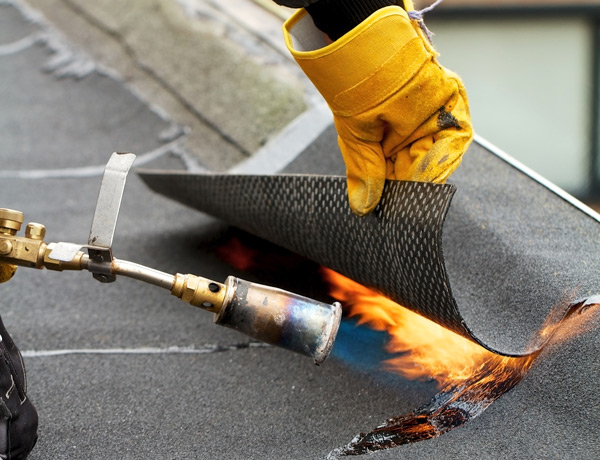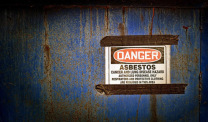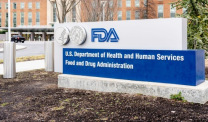What’s Included in the EPA’s New Asbestos Use Rule?
Asbestos Exposure & BansWritten by Matt Mauney | Edited by Walter Pacheco

The United States Environmental Protection Agency (EPA) is moving forward with a proposed rule critics fear will expand the commercial use of asbestos — a toxic mineral known to cause mesothelioma and other diseases.
The EPA received nearly 6,000 comments about its significant new use rule (SNUR) as of Aug. 10, the last day for public commenting.
In June, the agency proposed SNUR under the reformed Toxic Substances Control Act (TSCA). It would allow companies to manufacture, import and process more than a dozen asbestos-containing products no longer in use as long as the EPA approves them first.
The EPA’s summary of SNUR reads: “The Agency has found no information indicating that the following uses are ongoing, and therefore, the following uses are subject to this proposed SNUR: Adhesives, sealants, and roof and non-roof coatings; arc chutes; beater-add gaskets; extruded sealant tape and other tape; filler for acetylene cylinders; high-grade electrical paper; millboard; missile liner; pipeline wrap; reinforced plastics; roofing felt; separators in fuel cells and batteries; vinyl-asbestos floor tile; and any other building material [other than cement].”
Asbestos is banned in more than 60 countries worldwide, including the U.K., Australia and every member of the European Union.
But asbestos is merely regulated in the U.S., where it is still used in variety of products such as brake pads, automobile clutches, certain roofing materials and corrugated sheeting. The majority of raw chrysotile asbestos imported to the U.S. is used by chlorine manufacturers.
In December 2016, the EPA included asbestos on its top-10 priority list of dangerous chemicals subject to risk evaluations by the agency under the Frank R. Lautenberg Chemical Safety for the 21st Century Act, which reformed the longstanding TSCA.
However, with the introduction of SNUR, anti-asbestos advocates say the rule could open the door to new or revitalized asbestos uses and ignore “legacy uses” such as asbestos in homes, schools and landfills across the nation.
“Asbestos is a carcinogen regardless of whether it’s in building material that was installed 40 years ago or whether it’s in a newly manufactured product,” Melanie Bush, legislative attorney for the Environmental Working Group, told ABC News. “Cancer doesn’t distinguish between these two uses so when [the] EPA is evaluating asbestos we think they should take a comprehensive look.”
Asbestos Product Categories Under the EPA’s SNUR
The EPA listed 14 product categories under its proposed significant new uses of asbestos rule. The agency defines new uses as “asbestos product categories where manufacturing (including importing) and processing for the use is no longer ongoing.”
Each category — detailed in the EPA’s Federal Register released June 11 — was used in the U.S. at some point before August 25, 1989, when the agency published “Asbestos: Manufacture, Importation, Processing, and Distribution in Commerce Prohibitions.”
The SNUR would require companies to notify the EPA at least 90 days before starting any manufacturing (including importing) or processing of asbestos for a significant new use.
Product Categories of SNUR
-
Arc Chutes: These ceramic chutes were used to guide electric arcs in motor starter units in electrical engineering plants.
-
Beater-Add Gaskets: Asbestos fibers were added to beater-add paper to seal components of internal combustion engines and exhaust manifolds.
-
Extruded Sealant Tape and Other Tape: Made of butyl rubber and asbestos, this semi-liquid mixture would solidify when exposed to air, forming a tape used for sealing building window, car windshields and mobile home windows. It was also used by the aerospace industry.
-
Filler for Acetylene Cylinders: Asbestos was added to steel acetone cylinders for suspension, insulation and fire protection.
-
High-Grade Electrical Paper: Used for high-temperature, low-voltage applications such as motors, switch gears, transformers, generators and other heavy electrical equipment.
-
Millboard: Asbestos was added to this heavy cardboard-like product for insulation, gasketing, fireproofing and prevention of corrosion and rot.
-
Missile Liner: The U.S. military and NASA mixed asbestos with rubber to insulate rockets and rocket boosters used in weapons and space shuttles.
-
Adhesives, Sealants and Roof and Non-Roof Coatings: The automobile industry used asbestos extensively in a variety of adhesives, sealants and coatings. Non-roof coatings were used to prevent corrosion, while asbestos roof coatings were used to repair roofs and seal around chimneys and ventilation pipes.
-
Pipeline Wrap: The oil and gas industry used asbestos-containing felt to coat pipelines, cooling towers and steam pipes.
-
Reinforced Plastics: Automotive and appliance manufacturers used asbestos to reinforce plastics for electro-mechanical parts. The aerospace industry also used asbestos-reinforced plastics.
-
Roofing Felt: Similar to pipeline wrap, this single or multilayered felt was used to strengthen roofing and resist rot, fire and heat.
-
Separators in Fuel Cells and Batteries: The aerospace industry used asbestos as an insulator and separator between the negative and positive terminals of a fuel cell.
-
Vinyl Asbestos Floor Tile: Vinyl floor tiles are durable and cheap. The flooring industry mixed asbestos into these tiles to add more insulation and resistance to damage.
-
Other Building Materials: Includes insulation, plasters, mastics, textured paints and block filler paints for coating masonry.
Asbestos Currently in Many U.S. Products
The proposed SNUR would not evaluate current uses of asbestos, including:
- Raw bulk chrysotile asbestos for the manufacture of diaphragms used in chlorine and sodium hydroxide production
- Sheet gaskets for use in titanium dioxide chemical production
- Brake blocks for use in oil drilling
- Aftermarket automotive brake linings and other vehicle friction products
- Gaskets and packing
- Cement products
- Woven products
The 1989, the EPA issued the Asbestos Ban and Phase-Out Rule (ABPR) with the goal of a comprehensive ban of the toxic mineral. Asbestos manufacturers sued the agency and an appeals court overturned the rule in 1991.
The EPA was allowed to apply a ban to six product categories if the products were not being manufactured, processed or imported as of July 12, 1989, the day ABPR originated.
Current product categories under that ban include spray-on insulation, flooring felt, rollboard, commercial paper, corrugated paper, specialty paper and new uses of asbestos.
If the SNUR rule is enacted, it would overturn the previous new uses ban.
Nancy Beck, deputy assistant administrator in the EPA’s chemical safety office, said the SNUR proposal strengthens asbestos regulation, adding more oversight to uses that are not currently illegal.
“We’re really closing the door on those uses that are not happening now, but there’s nothing preventing them from starting,” Beck told ABC News. “If somebody wanted to start doing it there’s nothing preventing them. So we wanted to sort of look at the whole landscape and make sure that if anyone started a use we would be able to evaluate it.”







